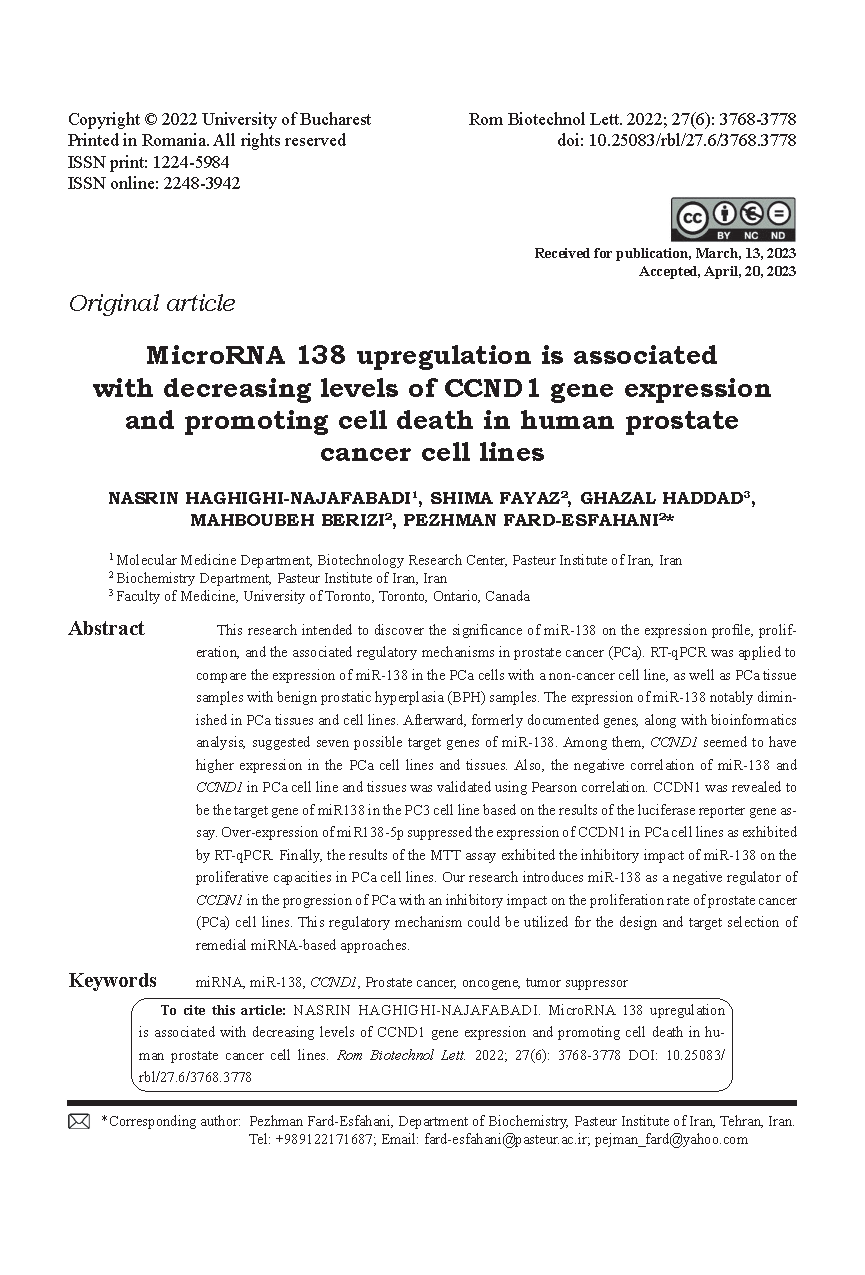MicroRNA 138 upregulation is associated with decreasing levels of CCND1 gene expression and promoting cell death in human prostate cancer cell lines
DOI:
https://doi.org/10.25083/rbl/27.6/3768.3778Keywords:
miRNA, miR-138, CCND1, Prostate cancer, oncogene, tumor suppressorAbstract
This research intended to discover the significance of miR-138 on the expression profile proliferation, and the associated regulatory mechanisms in prostate cancer (PCa). RT-qPCR was applied to compare the expression of miR-138 in the PCa cells with a non-cancer cell line, as well as PCa tissue samples with benign prostatic hyperplasia (BPH) samples. The expression of miR-138 notably diminished in PCa tissues and cell lines. Afterward, formerly documented genes, along with bioinformatics analysis, suggested seven possible target genes of miR-138. Among them, CCND1 seemed to have higher expression in the PCa cell lines and tissues. Also, the negative correlation of miR-138 and CCND1 in PCa cell line and tissues was validated using Pearson correlation. CCDN1 was revealed to be the target gene of miR138 in the PC3 cell line based on the results of the luciferase reporter gene assay. Over-expression of miR138-5p suppressed the expression of CCDN1 in PCa cell lines as exhibited by RT-qPCR. Finally, the results of the MTT assay exhibited the inhibitory impact of miR-138 on the proliferative capacities in PCa cell lines. Our research introduces miR-138 as a negative regulator of CCDN1 in the progression of PCa with an inhibitory impact on the proliferation rate of prostate cancer (PCa) cell lines. This regulatory mechanism could be utilized for the design and target selection of remedial miRNA-based approaches.





